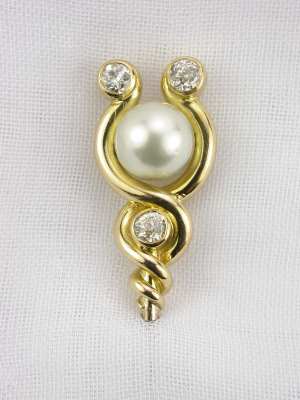FACET: History of Stick Pins
April 05, 2015Stick pins began with a little female ingenuity around the turn of the century. They evolved from the tie pins well-bred men of the early and mid-1800s wore to secure their cravats. Women saw these ornamental pieces and started coveting them for themselves. Soon enough they were wearing their own versions of these pins to secure their scarves. From there, the concept expanded, and women began wearing the pins as decorative accents on the lapels of their coats.
Stick pins, as they came to be called when their functionality continued to evolve, eventually went from single jewelry accents to being worn in groups. The first generation of antique stick pins from the late 1890s and early 1900s Victorian era often featured precious stones like pearls and gems like diamonds. Vintage stick pins from the later 20th century decades continued to use these elements as enhancements but in more subdued, less flashy ways.
The word stick pin gets its name from the long pin that extends from the jewelry piece, allowing it to be pushed through even thick fabrics like wool. A protective covering usually slips or screws on to the sharp end of the pin to not only keep it in place put also safeguard the wearer from being pricked.
The jewelry aspect of stick pins comes from their decorative top. In addition to pearls and gemstones, these tops can encompass a wide range of motifs from animals and flowers to bugs, horseshoes, and mythological creatures. Antique and vintage cameos also make frequent appearances in stick pins. As a result of the wide variety in which they could be purchased, stick pins allowed women to express their personalities.
The ability to make a fashion statement with stick pins prompted women to wear them not just when they dressed up but actually more often with their plain, everyday ensembles. In their early days, stick pins, in fact, could most often be spotted on women's sporting attire. Victorian women were particularly likely to dress up their outfits with stick pins when bicycling, playing tennis, or sailing.
Careful observers may note that some vintage and antique stick pins have twisted shafts. The reason for these spirals has nothing to do with appearance, although it does attract the eye. Twisting the metal simply made the stick pin stronger.
Return to blog home






 Facebook
Facebook Pinterest
Pinterest Instagram
Instagram